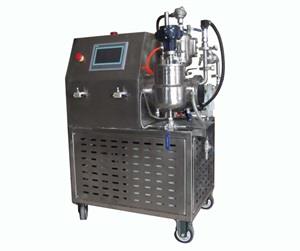The laboratory Sander, also called dispersion Sander or dispersion Sander, is designed to destroy, grind, disperse, emulsify metal, non-metal, organic, Chinese herbal medicine and other powders. Especially suitable for laboratory research and application, it can well meet the requirements of various process parameters and simulate various goals in production. At the same time, due to its advantages of small batch size, low power consumption, and low price, it is a choice equipment for schools, research units, and companies to study destructive processes, new materials, and coatings. Experience and skills of laboratory Sander.
1. Grinding barrel raw materials: Beside the grinding barrel industry, many manufacturers' grinding barrels are mostly made of stainless steel raw materials, and there are many types of stainless steel raw materials that need to be recognized by the owner themselves.
2. Raw materials for grinding barrel rotor: the process of Sander is mainly divided into two types, one is disc grinding disk, the other is rod grinding barrel and rod rotor. The rod Sander is much more obvious than the disc Sander.
3. Separation equipment of material and grinding medium (zirconium bead): when separating material and grinding medium in horizontal Sander, distance separation equipment is mainly composed of static ring and dynamic ring.
4. Mechanical seals and equipment cooling function: Is there any leakage in the mechanical seal and how many hours is its service life? The key is to choose the solvent or water that dissolves the grinding material as the circulating fluid for mechanical sealing, to avoid accidental contamination of the product during the production process and cause unnecessary economic losses.
5. In terms of production power: Whether the structural design is reasonable determines the production power and product quality.
6. In terms of operation: The main control part of the machine is very centralized and easy to operate.
7. Easy to change color, clean, and replace zirconium beads: Mainly understand whether there is no dead corner design in the grinding chamber and how effective self-cleaning is.
8. Supportive maintenance functions are complete: overall electrical material selection, quality assurance, etc.

